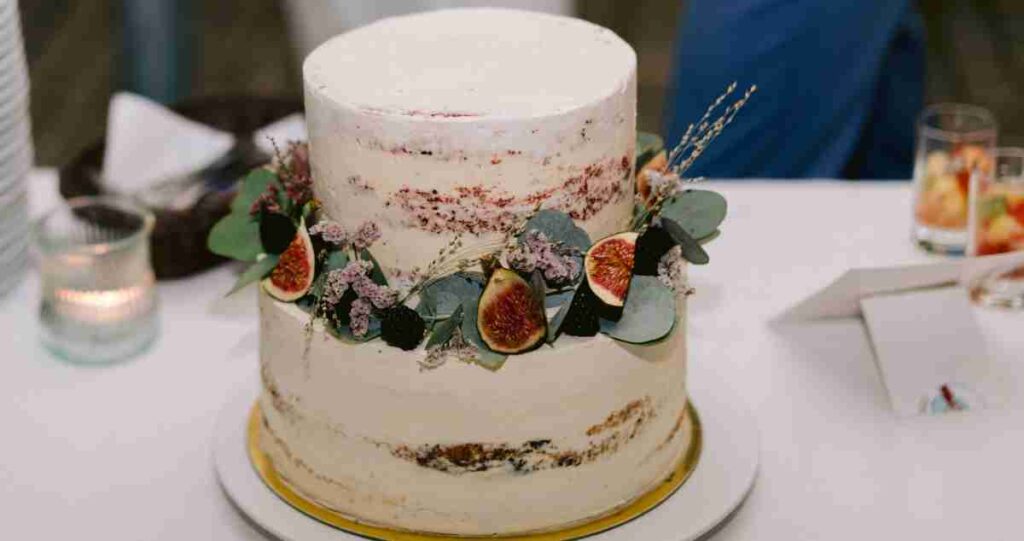As the centerpiece of many celebrations, a beautifully tiered cake adds an element of elegance and grandeur to any event. But when selecting the perfect 2-tier cake, size isn’t just about how many mouths you have to feed—it’s an artistic choice that impacts design, presentation, and flavor.
Whether you’re planning a small intimate gathering or a grand party, understanding the nuances of 2 tier cake sizes can help you choose a cake that’s not only visually stunning but perfectly proportioned for your guests.
Cake Tiers:
Cake tiers are what give a cake its height and grandeur. Simply put, a tiered cake consists of multiple layers, or “tiers,” stacked one on top of the other, with each tier typically a different size.
The smaller tiers are placed on top, creating a tiered pyramid effect. The concept of the tiered cake comes from a tradition passed down through generations, becoming a staple for weddings, birthdays, anniversaries, and other significant occasions.
When we talk specifically about a 2 tier cake, we’re referring to a cake with two layers. Usually, the bottom layer is larger, forming the base, while the smaller layer sits on top.
This simple yet elegant structure offers a canvas for various designs and flavors while providing flexibility in serving sizes.
The size of each tier, and thus the overall cake, can be customized depending on your requirements, making the 2 tier cake a versatile choice for any event. In the following sections, we’ll dive deeper into different 2-tier cake sizes and how to select the perfect one for your next celebration.
The Popular 2-Tier Cake Sizes:
Choosing the right 2 tier cake size for your event can be a bit like Goldilocks trying out the three bears’ beds. You don’t want one that’s too small or too big; you want it to be just right. But what does ‘just right’ mean in terms of cake sizes? It’s all about balance, proportion, and the number of servings you need.
- 6″ and 8″ Cakes: The smaller 6″ top tier can make a lovely visual contrast with the slightly larger 8″ bottom tier, offering a classic, balanced look. This size combination is popular for smaller gatherings, such as intimate weddings, baby showers, or family celebrations. It typically serves around 20-30 people, depending on how the cake is cut.
- 8″ and 10″ Cakes: An 8″ and 10″ 2-tier cake can be an excellent choice for medium-sized events. Its generous size makes it more visually striking than the smaller option, and there’s plenty of space for more elaborate decorations or personalization. This configuration can comfortably serve around 40-50 guests.
- 10″ and 12″ Cakes: If you’re hosting a large event with 60-75 guests, a 2-tier cake with 10″ and 12″ tiers might be just what you need. This sizeable cake stands tall and grand, commanding attention with its stature. This size allows for more intricate designs, and it’s perfect for parties where the cake is a key focal point.
Choosing the Right 2-Tier Cake Size:
Selecting the right size for your 2 tier cake involves more than just a headcount. It’s a decision that requires careful consideration, balancing your event’s practical needs with your cake’s aesthetic appeal. Here are some crucial factors to keep in mind:
- Number of Guests: Your cake should be large enough to ensure each guest gets a slice. This is perhaps the most important factor. Use the serving estimates mentioned earlier as a guide, but remember that not everyone might want a piece, especially if there are other dessert options.
- Event Type: The type of event can influence the cake size. A wedding, for example, might call for a larger, more impressive cake, even with fewer guests. On the other hand, a child’s birthday party might be better suited to a smaller cake, even with more guests, due to smaller portion sizes for kids.
- Other Desserts: You may not need as large a cake if you’re serving other desserts alongside the cake. Guests often like to sample a little of everything, so smaller cake portions might be more appropriate in this context.
- Visual Impact: If you want your cake to stand out, consider choosing a larger size, even if you have fewer guests. A larger cake can make a bold statement and serve as a centerpiece for your event. Conversely, a smaller, more understated cake might suit an intimate, low-key gathering.
- Budget: Ensure your cake size aligns with your budget, but remember that cost doesn’t always correlate with impact. Bigger cakes typically cost more due to the extra materials and labor involved. A smaller cake with elaborate decoration can often be just as impressive as a larger, simpler one.
- Leftovers: A larger size might be more appropriate if you’re okay with having leftover cake. However, if you’d rather not have too much cake left over, it’s best to aim for just enough servings for your guests.
Design Considerations for Different Sizes:
When it comes to designing your 2-tier cake, size isn’t just about servings—it plays a significant role in determining the aesthetic of your cake. Different sizes open up different possibilities for design, impacting everything from the complexity of decorations to the overall visual impact. Here are some design considerations to bear in mind when selecting your cake size:
- Decoration Space: The size of your cake determines the canvas you have to work with for decorations. Larger cakes offer more surface area for intricate details, whether complex frosting patterns, edible flowers, or personalized messages. Smaller cakes, while perhaps offering less room for embellishment, provide an opportunity to focus on a few keys, striking details.
- Proportion: Balance and proportion are crucial in cake design. With smaller cakes, the tiers might be closer in size, offering a more compact, cute aesthetic. Larger bottom tiers allow for more dramatic tapering to smaller top tiers, creating a grander effect.
- Color and Pattern: Different sizes can carry different colors and patterns better. Larger cakes can handle bold colors and patterns without looking overwhelming. On the other hand, a smaller cake might look best with lighter colors or simpler patterns.
- Topper Considerations: Your cake topper should be in proportion to your cake. A larger cake will need a more substantial topper to balance it out visually, while a smaller one might require a more delicate one.
- Structural Considerations: Larger cakes may require additional structural support for complex designs or heavy decorations. Smaller cakes, being lighter, are less likely to need such support.
Practical Tips for Handling Different Cake Sizes:
Dealing with 2 tier cakes can be a delicate operation, especially with larger sizes. From transportation to serving, different sizes require different handling methods. Here are some practical tips for smoothly handling different cake sizes:
- Transportation: Larger cakes can be more challenging to transport. You may need a sturdy, flat surface and a vehicle with enough space to place it on. Smaller cakes are typically easier to move, but they should still be handled carefully to avoid damage.
- Assembly: Depending on the size and design of your cake, you might need to assemble it on-site, especially for larger cakes. Smaller cakes are usually delivered assembled.
- Serving: Cutting a 2 tier cake can be trickier than it looks. Start by removing the top tier, then cut the bottom tier. You’ll need to disassemble the tiers before serving. Remember, the size of the cake will determine the size of the slices. You might need to cut smaller slices for larger cakes to ensure everyone gets a piece.
- Storage: If you have leftover cake, you’ll need to store it properly. You might need to cut larger cakes into smaller pieces for storage. Smaller cakes or pieces can usually fit in airtight containers in your fridge.
- Safety Precautions: Large cakes are heavier, and improper handling can result in injuries. Always lift with your knees, not your back, and ask for help if a cake is too heavy to lift comfortably.
 Conclusion:
Conclusion:
The beauty of tiered cakes lies in their versatility and adaptability, catering to small, intimate gatherings and grand celebrations. Choosing the right 2-tier cake size for your event combines art, science, and personal preference.
It’s about understanding the interplay between guest count, event type, design aesthetic, and logistics. Armed with the insights from this guide, you’re now ready to make an informed decision on your 2 tier cake size, ensuring a centerpiece that’s not just delicious but also a true reflection of your celebration.
- What size pan is one and a half (1.5) quarts? - June 8, 2023
- Le Creuset saucepan sizes: Choosing the Perfect Pan - June 8, 2023
- Blue diamond pan instructions: Step-by-Step Guide - June 8, 2023






